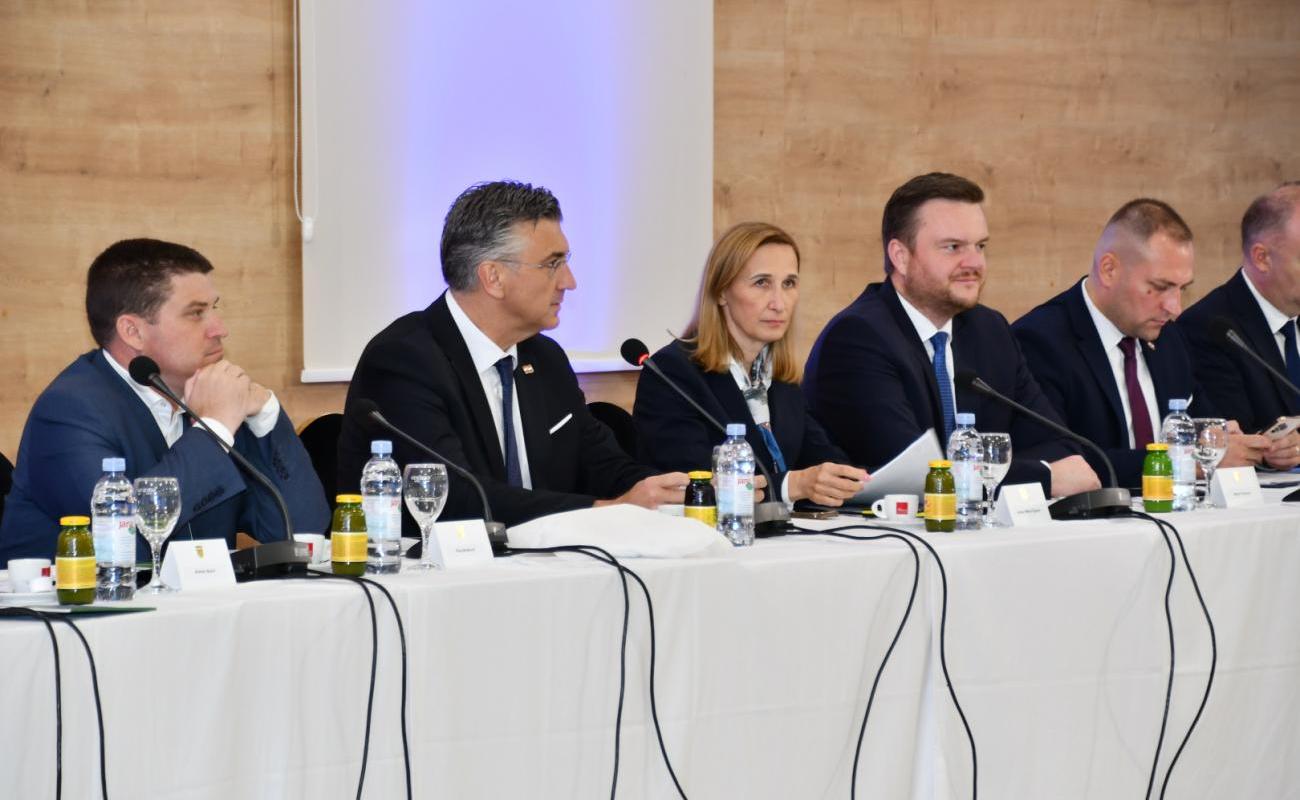Five Slavonian counties to receive as much as 4.5 billion euros from European funds

Prime Minister Plenković chaired the 19th session of the Council for Slavonia, Baranja and Srijem in Slatina today, at which he said that the Slavonia, Baranja and Srijem Project has put five Slavonian counties in focus, emphasizing that a total of 4.5 billion euros worth of projects were contracted for them from 2016 to 2025. Ahead of the Council session, 104 contracts worth almost 98.77 million euros were awarded, for projects in the water and communal economy, road infrastructure, economy, entrepreneurship, agriculture, social inclusion, tourism, culture, housing, energy renovation of buildings and sports.
The government's regional development policy achieved great results
In his introductory speech, Prime Minister Plenković pointed out that after the local elections, Croatia has three years ahead of it without elections and the opportunity for everyone to work together to improve the quality of fellow citizens in all parts of Croatia.
Our policy towards regional development has achieved great results, continued the Prime Minister, explaining that the analysis of the Ministry of Justice, Administration and Digital Transformation showed that in local elections there was a change of government in only 17 percent of units, and 83 percent confirmed the political option in which they had previously trusted.
He pointed out that this speaks of the work and effort of people and parties who have been trusted, but it is also an important message that the Government's policy of regional development, project implementation, fiscal and functional decentralization and structured dialogue has led to the position of each of those who managed some level of local or regional government to receive that trust and continue.
Slavonia, Baranja and Srijem Project Part of the National Development Strategy
He emphasized that the Slavonia, Baranja and Srijem Project has put five Slavonian counties in the spotlight in a way that has never been the case before. When all the funds are added up, projects worth 4.5 billion euros have been contracted for these five counties from 2016 to 2025.
Of this, Osijek-Baranja County leads with 1.7 billion euros, Vukovar-Srijem with almost a billion euros, Brod-Posavina and Virovitica-Podravina with a little over half a billion, and Požega-Slavonia County with around 415 million euros. There are also a number of joint projects worth 336 million euros.
He recalled that the Slavonia, Baranja and Srijem Project is part of the National Development Strategy that the Parliament adopted several years ago at the proposal of the Government and added that it is also relevant from the aspect of the main government priorities, such as demographic revitalization, digital transformation, green transition and investments in education and productivity, innovation and ultimately the competitiveness of Croatia.
Regarding the economic situation, the Prime Minister pointed out that today we can see a policy of catching up with more developed countries that entered the European Union before us. In 2016, Croatia's average development according to the GDP per capita criterion was 61 percent, in 2024 it was 77 percent, and at the end of 2025 it will be 78 percent, considering GDP growth and other trends, he said.
In the proposal for the new Multiannual Financial Framework, national and regional programs
He also referred to the European Commission's proposal for the Multiannual Financial Framework and announced that the Government would study the plan in detail, consult all relevant stakeholders in Croatia and try to see in the negotiation process over the next year, year and a half what opportunities Croatia has.
The proposal for the new Multiannual Financial Framework worth 2 trillion euros is ambitious, continued Plenković, adding that it has brought a new structure to the European budget, with four basic headings relating to national and regional programs, competitiveness, global Europe and administrative costs.
Stressing that this is just a proposal, he said that there are still several elements that should be welcomed, namely the flexibility, simplicity and efficiency of the budget, and the great innovation is the national and regional programs.
